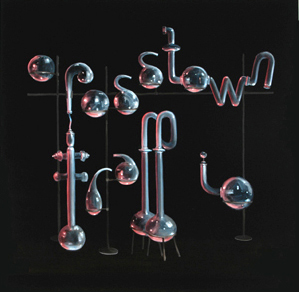"Electric Ladyland" is an exhibition of seventeen paintings by Vancouver-based artist Neil Wedman. Known primarily for his large-scale figurative paintings, Wedman has also produced photographs, short films and Burlesck, a novel composed of drawings published by Arsenal Pulp Press. His works have been exhibited and collected internationally.
This exhibition brings together a new body of work conceived around the subject of Jimi Hendrix’s seminal 1968 double-album, Electric Ladyland. The cycle centres on Wedman’s large-scale (6 x 10 feet) rendition of the notorious, nude cover photograph that appeared on the 1969 U.K. and European album release. It includes a new sequence of paintings that combine Wedman’s "Chemistry Sets" series (1998-99) with the psychedelic poetry of the Hendrix song titles. The paintings meld language into palpable substance to reformulate Hendrix's question, "What's physical?" The Belkin Satellite is pleased to offer "Electric Ladyland" for touring across Canada and the United States between 2005 and 2008.
Exhibition
The exhibition consists of the large, central painting, Electric Ladyland, and sixteen new works. The grand scale of Wedman’s Electric Ladyland invokes the resemblance of the original album cover composition to nineteenth century academic paintings that picture similar arrangements of female nudes, for example Ingres’ The Turkish Bath (1862). The cycle's sixteen "chemistry set" paintings depict complex assemblages of scientific laboratory glassware—bell jars, retorts, alembics, condensers, distillation flasks and other various unidentifiable vessels—in such a way that the translucent orbs and convolutions of tubing spell out the titles of each of the tracks on the Electric Ladyland album. Wedman's use of pharmaceutical vials reflects traditional themes of the still life genre—those of conversion, transition, impermanence and possession—as well as the psychedelic alphabets of the 1960s and the pop alchemy of the subject matter.
Publication
The exhibition is accompanied by a complimentary exhibition brochure which includes an essay by Monika Szewczyk and a list of works in the exhibition.


